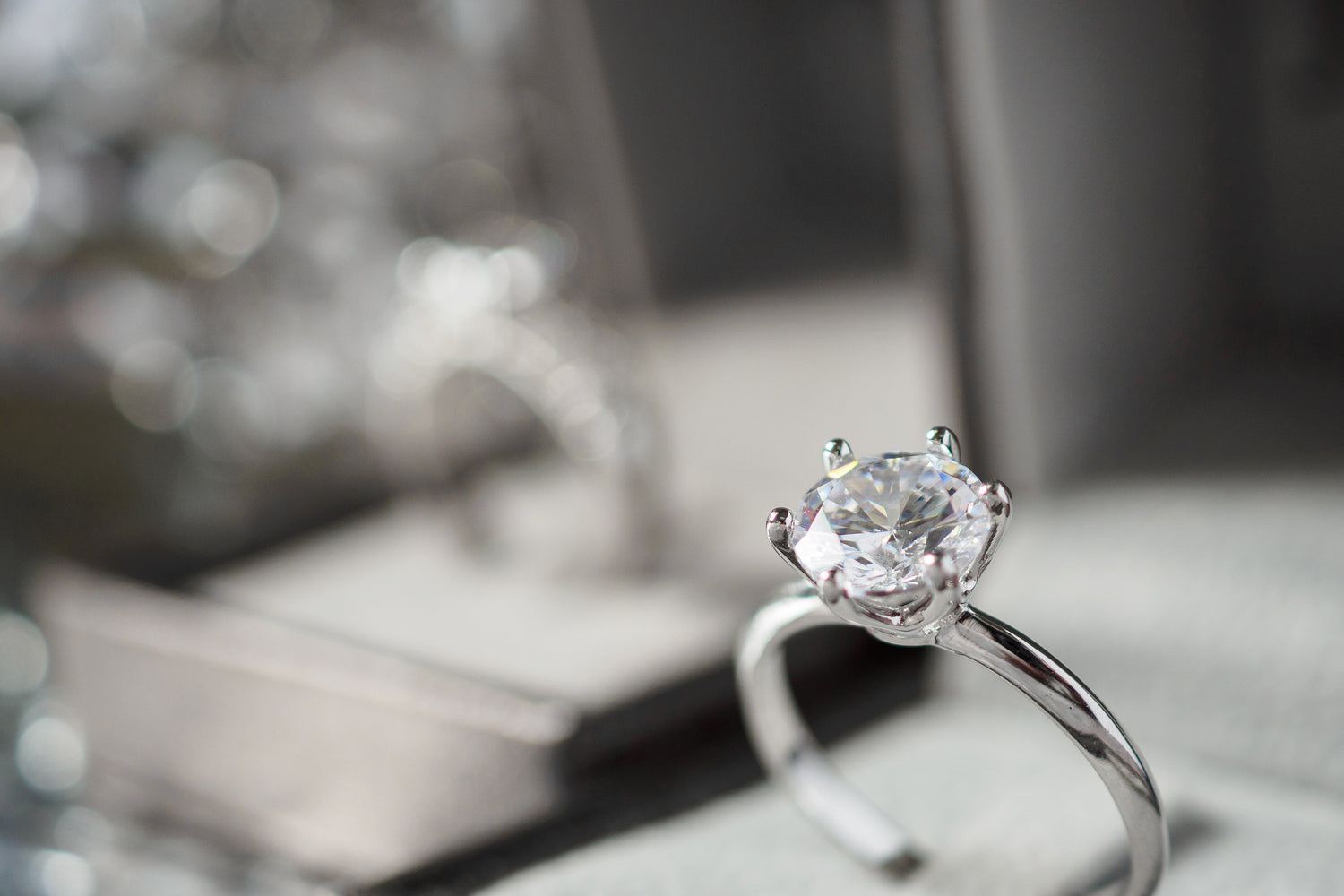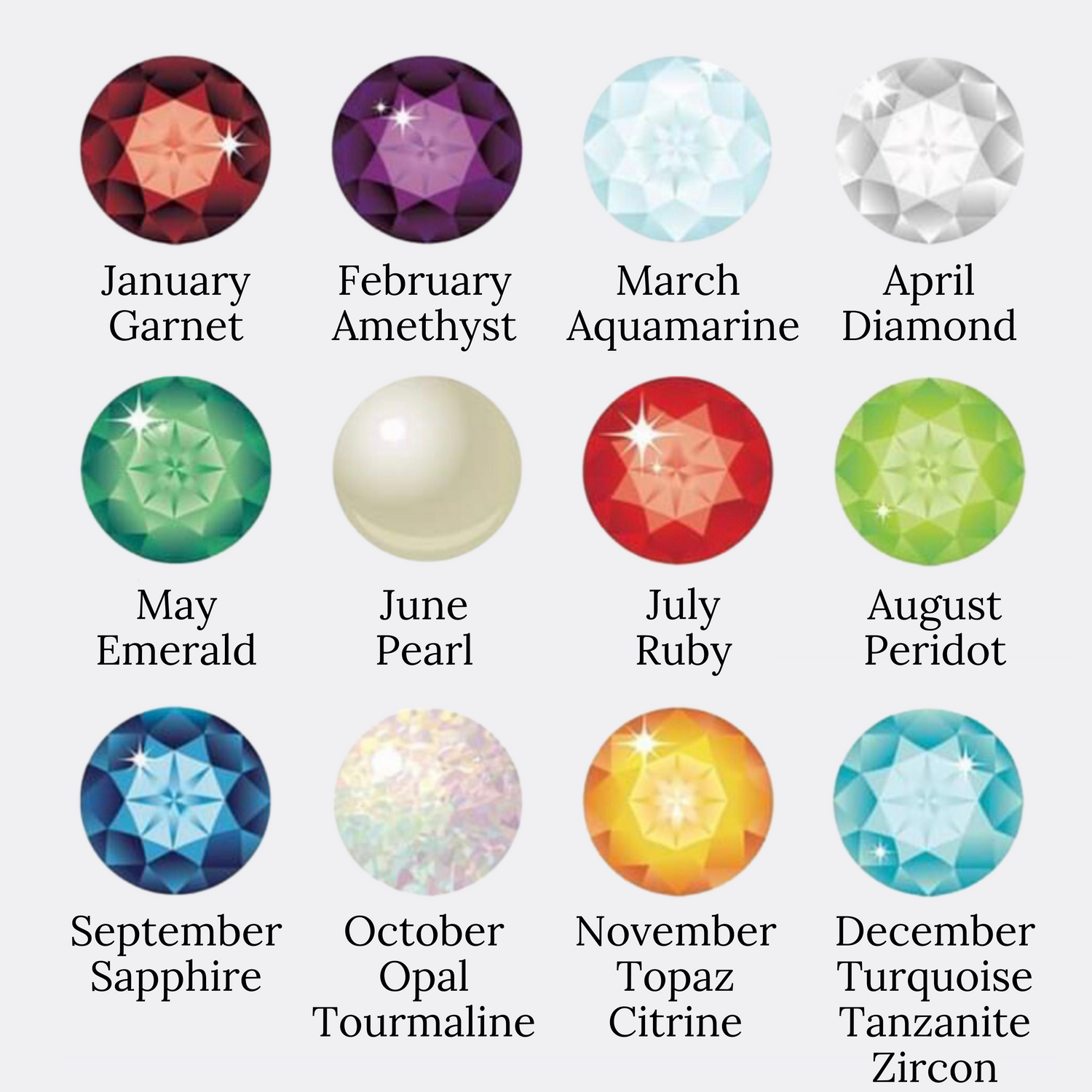
Diamonds
Diamonds are a mineral composed of pure carbon. Making it the hardest naturally occurring substance known. Diamonds can come in many different shapes the 12 most popular being round, princess, cushion, oval, emerald, pear, marquise, radiant, square radiant, asscher, heart and trillion. Diamonds also come in many different sizes and are measured in carats.

Birthstones
For many centuries, wearing the birthstone associated with your date of birth was thought to bring good luck and protection. In modern times, birthstone jewellery is a popular keepsake gift for birthdays, Christmas, christenings and anniversaries. A birthstone can feature in different shapes, various sizes and best of all, in all types of jewellery. It's the perfect gift for someone special or a great treat for you.
Collapsible content
Gold
Many believe, including some jewellers, that the higher the carat of gold the softer the metal (gold is a soft metal). Thus 9 carat gold, being alloyed with other metals tends to be more resistant to scratching than say 22 carat gold. This is not necessarily the case. Many manufacturers producing 18 carat gold jewellery ensure that, as the jewellery is higher quality, the alloy is harder wearing. This way when you have bought a piece of fine jewellery it will last a long time.
Platinum
Often referred to as a hard metal, this can be misleading. Pure platinum is in fact softer than pure gold, it is the other constituents of the alloy that make it hard wearing. The most common 950 (95% pure) alloy is the hardest of the precious metals used in jewellery. What mustn't be forgotten is that even so, it is far softer that other common metals, for example steel and chrome.
Platinum is very durable and takes a fine polish that is resistant to wear. It is naturally a greyish white and is often rhodium plated to make it even whiter. It requires a higher level of craftsmanship and also being rarer than gold, explains why it is worth the extra expense.
Silver
Silver is one of the precious metals. It can achieve a great polish and does not tarnish in its pure form. Most silver jewellery is silver combined with other metals as an alloy. This makes it more suitable for general use. Sterling silver, like some other precious metal alloys, can oxidise over time. Properly maintained silver jewellery improves with age and develops a beautiful patina. Treat your silver well, care for it properly and it will reward you with a long life and a special look.
Palladium
Palladium is a rare and lustrous silvery-white metal and belongs to the same group of metals as Platinum. Although Palladium shares similar properties to Platinum it is much less dense - an identical piece of Palladium jewellery will weigh 50% less than in Platinum. The weight of Palladium is very similar to that of 14ct gold, but because Palladium is historically less expensive than Gold per gram, Palladium jewellery is generally more competitively priced. Its properties and characteristics make it ideal for jewellery. It is naturally white and so it will never tarnish or change colour. Rings never need to be Rhodium plated and can be sized just like other precious metal jewellery. Palladium is hypoallergenic so it is ideal for sensitive skin.